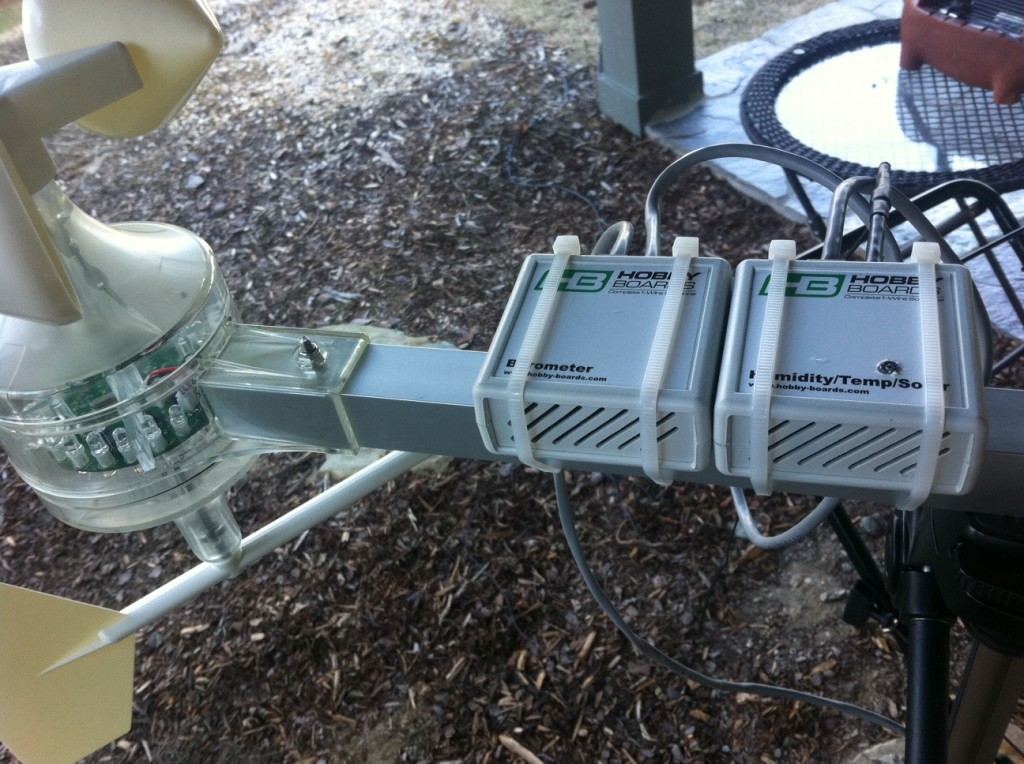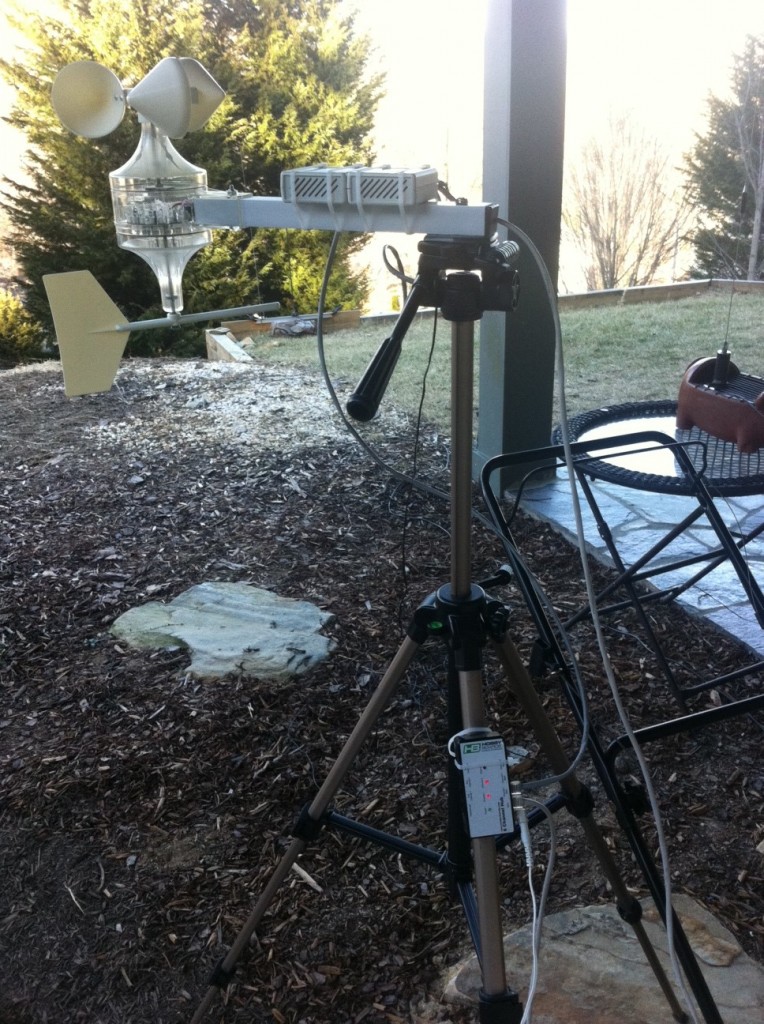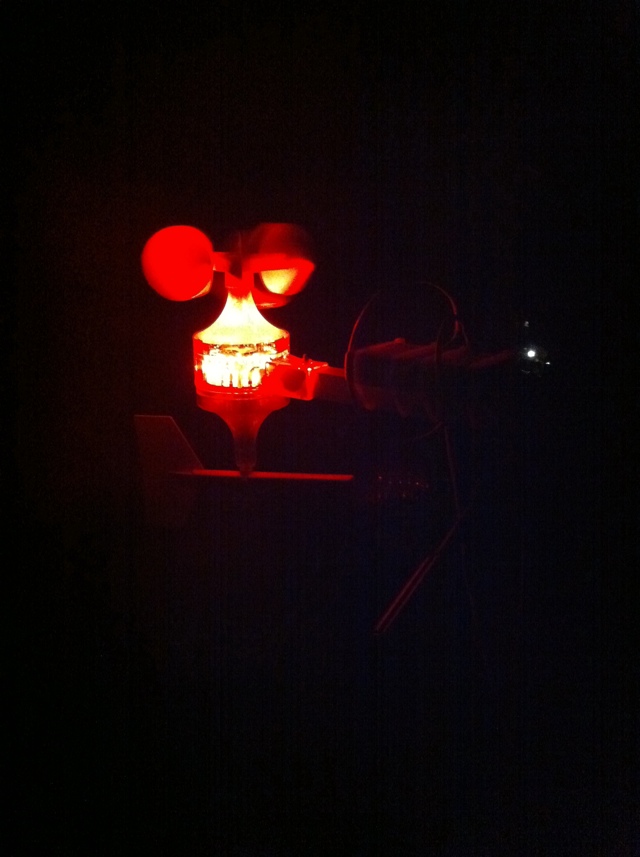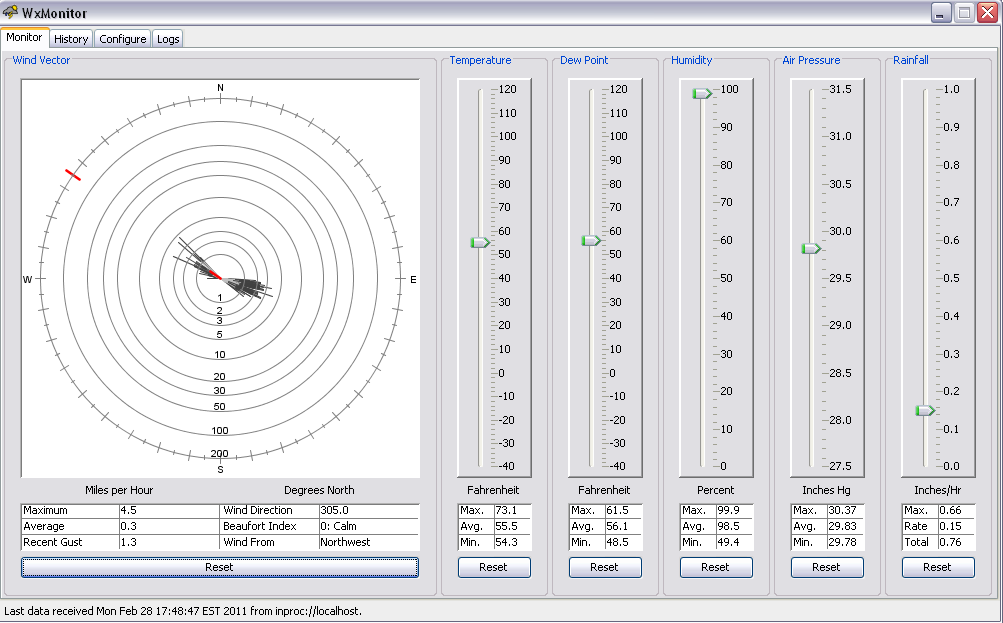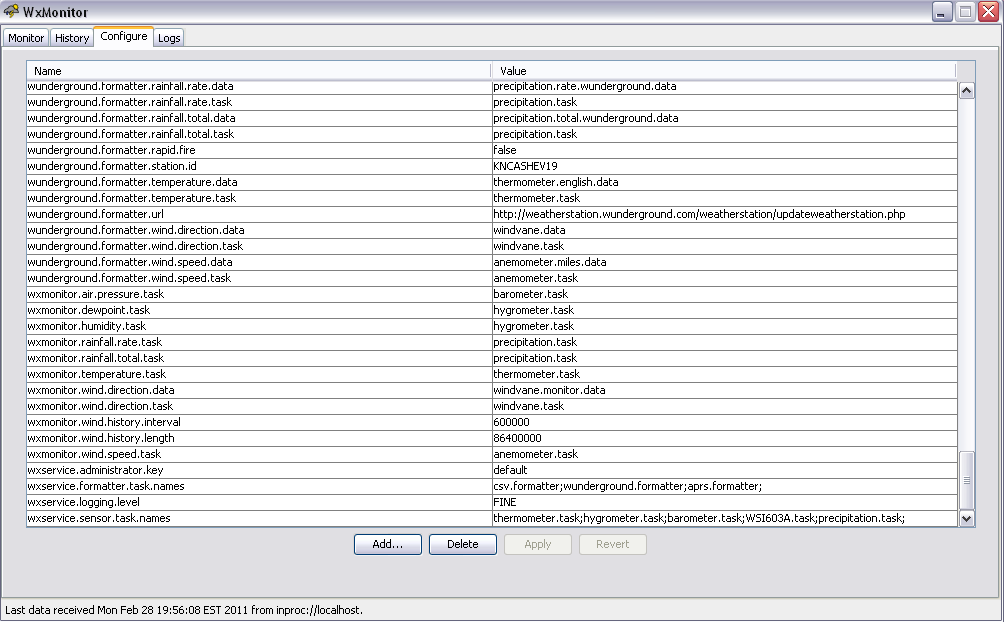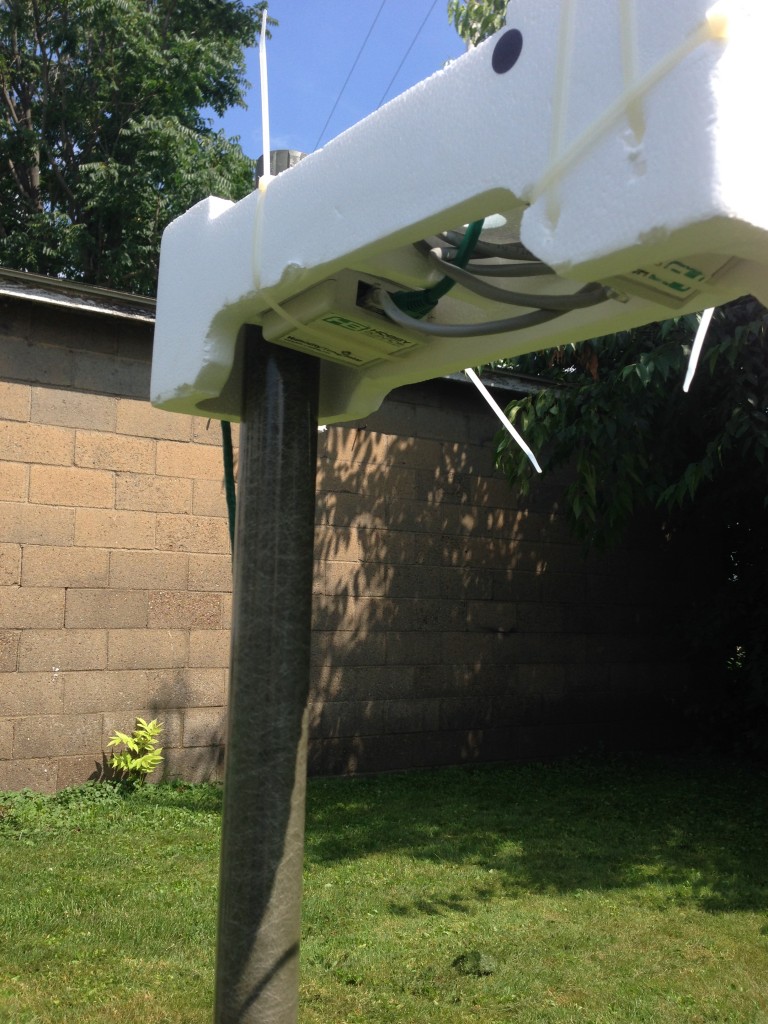Click Here to view my Wunderground Personal Weather Station history page.
I think that a 1-wire station is a fun way for anyone to play around with calibrating sensors a little bit, getting the hardware to communicate with your computer correctly, and creating some way for them to be mounted or used outdoors/indoors for sensing the weather. Here’s how I’ve designed mine.
I enjoy most operating mobile, and especially when observing severe weather, it’s a lot of fun. I wanted to have a portable Wx station, able to be either mounted on or deployed from my vehicle. I looked at a variety of stations and I came to the conclusion that a 1-wire station would be the easiest to customize with any number of sensors that I wanted, however many or few. Also, these devices (for the most part) can be connected via standard ethernet cables (there are some exceptions to this).
I ordered an anemometer, which included inside it a light sensor and a thermometer. These parts were biased due to being contained within the plastic casing of the anemometer, which also housed the LED lights, circuit board, and sensor magnets. The LED lights produce light and heat, and the plastic casing helps to contain it around the thermometer sensor and the light sensor. I decided it would be best, then, to get another light sensor and thermometer, and I found this in combination in a single device; referred to by me as the humidity/temp/solar sensor. I also wanted to read barometric pressure, and so I added a barometer, which also contains a thermometer inside. Having an additional thermometer would be good for averaging and becoming more accurate in my readings. Finally, I added a rain gauge, which has a tipping bucket inside, that rocks from side to side. Each time it rocks, it swings a sensor past another sensor on a circuit board and empties out through a porous base. This counts 0.01″ increments, and my software then counts these tips to produce a figure of in/hr.
I mounted all of these devices, excepting the rain gauge, on to a camera tripod, which can be collapsed in to about 3′ of height and 5″ of girth, and can be easily stowed inside the trunk or back seat of a vehicle. I can deploy this if the situation allows for it, and read the data with my Netbook while in a mobile storm chasing scenario, or if I just want to read the weather data for where I am a particular day, before flying RC planes or kites.
The software you use is at your discretion, but I have been working together with the creator of WxMonitor, Karl Uppiano, to improve the program with its ability to interact with and use 1-wire devices, by providing data from my station while testing the use of these sensors and calibrating them correctly. Great to be able to communicate directly with the programmer of the software, for sure. Thanks, Karl. Here’s a link to his Website: WxMonitor. This software is great in that it also can be configured to transmit data to APRS, via TCP/IP. I have it configured as such, and I use it as a “home station” when not being used mobile.
The devices that I used were pre-assembled and ordered from Hobby Boards. They offer assembly, protective casings, and water resistant coatings for the circuit boards that make up the devices.
Here are some pictures of my setup, including screenshots of the software and an alternate setup for some of the sensors under a homemade solar radiation shield made from styrofoam:
